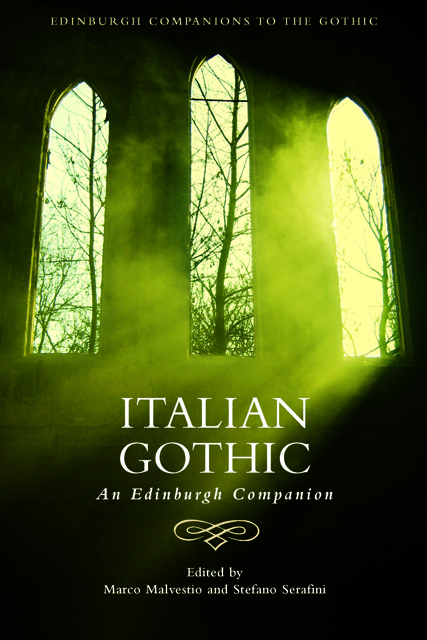8 - The Gothic in Periodicals and Magazines
Published online by Cambridge University Press: 20 October 2023
Summary
Towards a National Readership
In the years immediately following the unification of Italy, Scapigliatura's fascination with Gothic themes and the occult in general – and that of authors who were influenced by the movement – found ample space in the pages of magazines (some more successful than others), which, however, could not rely on national, or at times even regional, distribution. As noted by the historian Donald Sassoon, ‘in 1872, the highest-circulation daily was the Milanese Il Secolo (1866), which sold only 30,000 copies’ and ‘Italian dailies […] depended more on ministerial favour, government handouts and banking and business interests than on market demand’ (323). The sociologist Fausto Colombo identifies 1881 as the actual beginning of an Italian cultural industry, although he notes that the process had already started in the first decade of unification (39).
Interestingly, despite the prolonged absence of an efficient national distribution system, numerous authors regularly contributed to newspapers and magazines whose offices and readerships were located in distant cities or regions. The Neapolitan Salvatore Di Giacomo – a versatile exponent of Verismo, who initially took inspiration from German fantastic literature, as well as Edgar Allan Poe and the Erckmann-Chatrian duo – readily springs to mind. ‘La veglia al morto, ossia l’orologio dello zio Van Becke’, one of the author's most distinctively Gothic stories, first appeared in the Gazzetta Letteraria of Turin, from 31 January to 7 February 1880, and, just a few days later, it appeared in the Naples-based Corriere del Mattino (9–12 February). The Gazzetta Letteraria began as a weekly supplement of the Gazzetta Piemontese (which, in 1894, became the still-active newspaper La Stampa), having been founded in 1876 by Vittorio Bersezio, another author with a propensity for the Gothic. Until it was discontinued in 1902, the Gazzetta Letteraria distinguished itself by publishing writers from all parts of Italy and for acquainting its public with foreign artists and authors.
However, the periodical that ushered in an epochal change – being the first to assume a truly national character – was the Fanfulla della Domenica, launched in 1879 by Ferdinando Martini as a Sunday supplement of the daily Fanfulla (originally inaugurated in Florence nine years earlier, but which, after less than a year, relocated to the Kingdom of Italy's new capital, Rome).
- Type
- Chapter
- Information
- Italian GothicAn Edinburgh Companion, pp. 123 - 137Publisher: Edinburgh University PressPrint publication year: 2023



